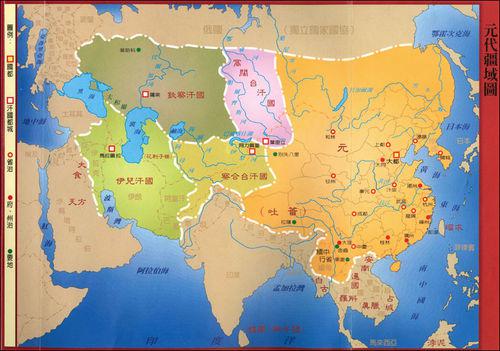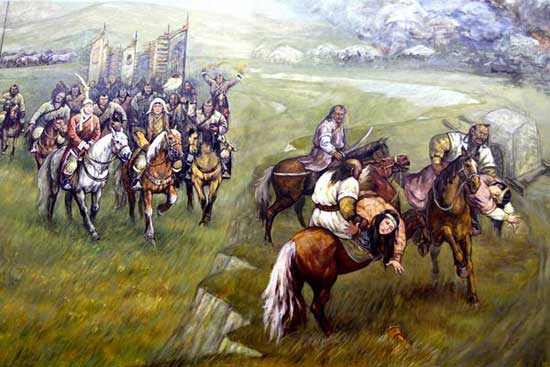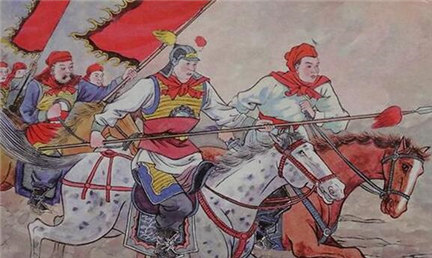Yuan Empire Expanded the Unified Multi-ethnic Country
5 min readAt the end of the 12th century, the Mongol ethnic group, previously under the reign of Liao and Jin, grew stronger. In 1206, Temujin unified the Mongolia prairie and established the state of Mongolia. He took the title of Genghis Khan. Expeditions led by him and his successors led to a rapid conquering of vast areas across Eurasia, bringing severe tribulations to the people. The Mongolian Empire bestrode Europe and Asia, but it was actually an unstable political and military union lacking a common economic base and comprehensive laws and codes. In 1271, Kublai changed the title to Yuan and set up his capital in Yanjing to move the sovereign center toward the central plains. In 1276, Yuan troops captured Lin’ an, announcing the end of the Southern Song. In 1279, Yuan unified the whole country.

Kublai, Emperor Shizu of the Yuan Dynasty, was entrusted to rule over the Han settlements in South Desert in his early years, where he was deeply affected by the culture of the central plains. After ascending the throne, Kublai issued orders tha “the state shall put its people first; people put food and clothes first and food and clothes shall rely on agriculture and sericulture.”He also opposed massacring the inhabitants of a captured city and making them servants, forbade Mongolian nobles to arbitrarily take peasants’ land and barren farming land as pastures. That was why the “bustling city wasn’t affected by the war and remained as prosperous as before”when Lin’ an, the capital of the Southern Song Dynasty, was attacked by the troops of Yuan.
Establishment of the policy of “agriculture and sericulture of primary importance”marked a significant turning point in the national policies of theMongolian Empire and accelerated the transformation from a nomad economy to a farming civilization. The court successively set up organizations and legal systems, and attached great importance to the popularization of advanced science and technologies, which proved to be quite fruitful. The Dasinongsi was set up at the central level, taking charge of nationwide agricultural and sericultural affairs. Such criteria as “growing households,””increasing reclaimed fields “and”affordable tax and duties”were adopted for achievements measurement as well as awards and punishment for local officials. The “system of agriculture and sericulture”implemented nationwide also offered extremely detailed provisions on planting affairs. Many local governments had farming and weaving pictures painted, making “its officials acquainted with basic knowledge when they passed through the paintings.”Encouraging and highlighting farming then became the fashion of the time. Kublai further ordered Daisinongsi to compile the Essentials of Agricultureand Sericulture based on agricultural books both in the past and at present. This book was circulated nationwide and some 10,000 copies were printed in 1332.

While abolishing some backward Mongolian systems like “integration of army and civilians,””dividing and sharing land among people”and hereditary official positions at prefecture and county levels, Kublai imitated the systems of former Tang, Song, Liao and Jin dynasties,”establishing official positions in charge of different affairs”to stabilize political situations and appease the public. Threemajor systems, namely Zhongshu Ministry, Shumiyuan and Yushitai, were established a the central level, and Xuanzhengyuan was also set up to manage nationwide religious affairs and Tibetan areas. In addition, Xingzhongshusheng, or simply called “xingsheng,”was established as the local branches of the Zhongshu Ministry and administrated by officials directly dispatched by the central government. In some remote areas inhabited by ethnic groups, Xuanweisi was set up for administration. To timely convey political orders and strengthen ruling over local areas, Tongzhengyuan and posthouse systems were also established nationwide, delivering top-to-bottom or bottom-to-top files and documents and offering traveling emissaries and officials daily necessities and traffic tools. That played a big role in consolidating the reunification.

To maintain the privileges of Mongolian nobles, the Yuan Dynasty classified people of different ethnic groups into four classes, namely Mongolians, Semu people, Han people and South people, which reflected its negative and backward side like racial discrimination and differentiation. On the other hand, the reunification of the Yuan Dynasty facilitated communication and exchange among people from all ethni groups, resulting in the gradual amalgamation of Qidan and Nvzhen people who moved southward to the central plains. Many Persian and Arabian Islamites immigrated to China and mixed with the Han and Mongolian people, shaping a new community known as the Hui ethnic group.
Yuan realized a wider grand unification based on the civilization of the centralplains. With vast territories, the empire expanded from areas north of the Yinshan Mountain in the north,to islands in South China Sea in the south,and stretched from present-day Sakhalin Island in the northeast to areas including Xinjiang and Central Asia in the northwest.Yuan officially included Tibet into the Chinese reign,set up an executive secretariat in Yunnan and a patrol inspection administration in Penghu under the jurisdiction of Jinjiang County,Fujian to administrate Penghu and Liuqiu(present-day Taiwan).The effort intensified Yuan’jurisdiction and exploration in these areas.The Semu people,including the ethnic groups in Xinjiang,became part of the top ruling class of the Yuan Dynasty,increasing the contacts between the central plains and Xinjiang areas.
Following the historical retrogression caused by the changes of dynasties,the Yuan Dynasty witnessed rapid economic recovery and further consolidation of the unified multi-ethnic country.The period also saw smooth domestic traffic and outbound traffic including both land and sea routes as well as frequent Sino-foreign exchanges.Such cities as Dadu(present-day Beijing),Hangzhou and Quanzhou were much more prosperous than in any previous days.Rabban·Sauma from Uihur was once sent to Europe from Dadu,who established ties with Roman Church and wrote the first Chinese records on what he saw and heard in Europe.Marco Polo,an Italian businessman,arrived in Dadu in 1275 through the Silk Road and stayed in China for 17 years,where he was once appointed by Kublai as an official of the Yuan Dynasty. His book,The Travels of Marco Polo,dealt with many aspects of the Chinese life like the bustling cities,social situations,folk customs,religious beliefs and unique products,creating a sensation among the European society.The unprecedented expanding of Sino-foreign economic and cultural exchanges in the Yuan Dynasty imposed a significant influence on the world’s history.








